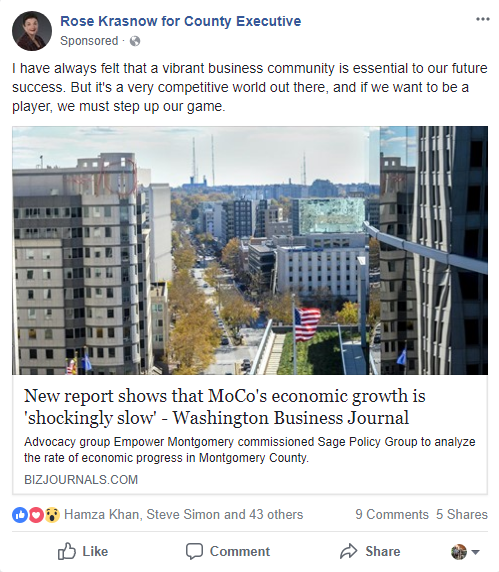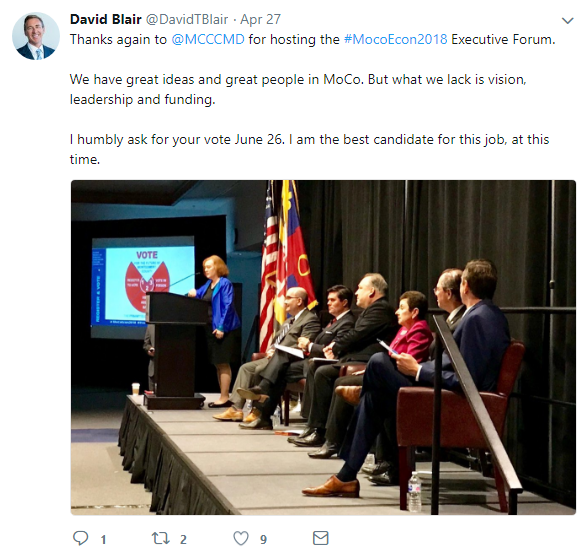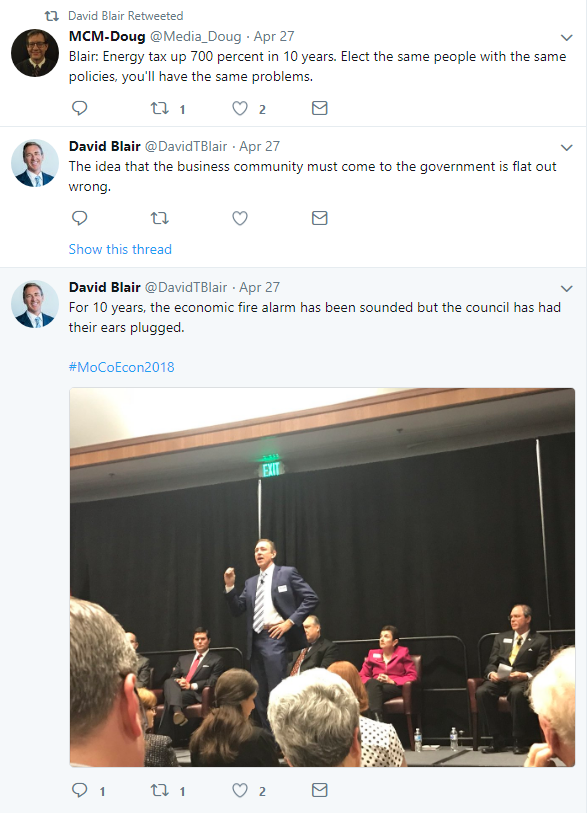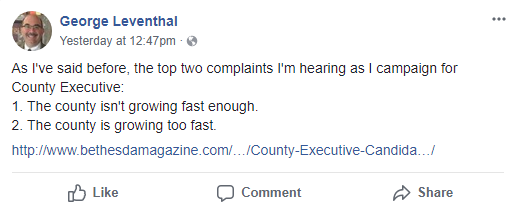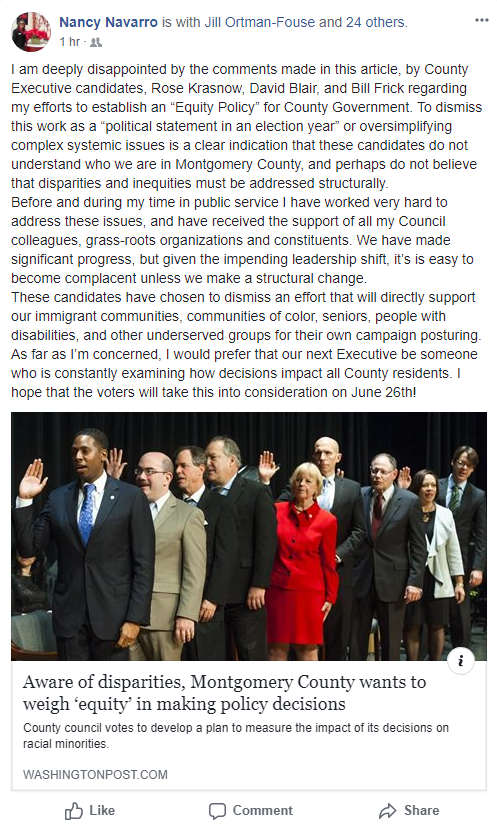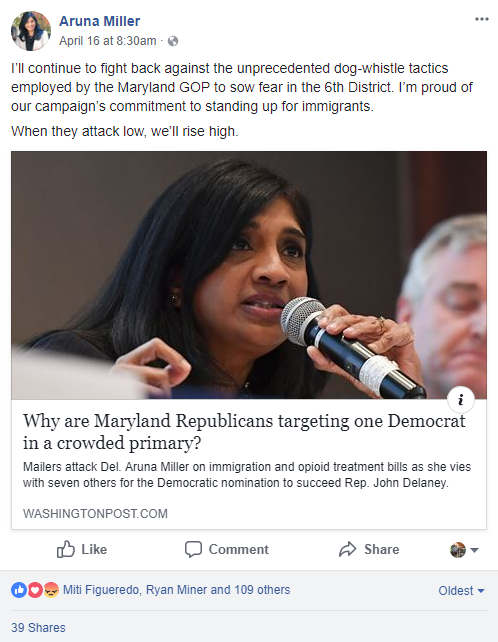Ben Jealous’s campaign blasted my posts about his voting record with its own blog post earlier today. If nothing else, my posts have helped clarify the voting records of the candidates, a topic Larry Hogan will be sure to bring up if the nominee is vulnerable.
Could I have done so in a better way? You bet. (For example, it was pointed out to me last night that I should have indicated that Krish Vignarajah was simply too young to vote in some elections on the chart.) Jealous’s post, however, is a combo platter of legitimate grievance, high dudgeon, and deception by omission.
Agreed Facts
Jealous says he has voted in Maryland exactly four times: the 2012 general election, the 2014 election, and the 2016 primary and general elections. This is exactly what I reported in my post on the Maryland voting records of all candidates.
As Jealous has now made clear, he did not vote in Maryland previously because he was living in D.C. and California. When he became NAACP President, he moved “back to D.C.” The NAACP headquarters are in Baltimore, though the organization also has a Washington bureau.
Jealous further claims that, contrary to my statement, that he has “long been” a Democrat but then says that he “chose to be formally unaffiliated during his time as president of the NAACP.” Fair enough, but this also means that was, in fact, not a registered Democrat from 2009 to 2013.
More interestingly, Jealous states “Since leaving the organization, in 2013, Jealous has voted consistently as a Democrat in Maryland, including participating in the 2016 Democratic presidential primary election.”
This neatly elides over and omits that he didn’t participate in the 2014 Democratic primary, the only gubernatorial primary for which he has been eligible. He left the NAACP in 2013, so his stated reason for being unaffiliated no longer held. Certainly, the 2014 Democratic primary was exciting with a gubernatorial race between Anthony Brown, Doug Gansler, and Heather Mizeur.
Though Jealous touts his record on supporting women and people of color, he chose not to vote in that primary. (Krish Vignarajah faces the same problem far more acutely. She routinely lambastes the lack of women and people of color in elected positions in Maryland but elected not to vote in Maryland in 2014 or the hotly contested Edwards-Van Hollen primary in 2016.)
Bottom line, Jealous has voted four times in Maryland since 2012. He has never voted in a gubernatorial primary, as he skipped the 2014 Democratic primary. According to Jealous, he was not a registered Democrat in 2012, so he was unable to vote in that primary.
High Dudgeon
Jealous spends much of the post, which appeared today, attacking claims I made two days ago but realized on my own were not right and corrected within hours as soon as I had that facepalm moment.
I took the unusual step of putting out a separate post highlighting the corrections, so that everyone who gets 7S in their mailbox would see it. Additionally, I tweeted and put up a post on the blog’s Facebook page with the correction. All state: “My apologies not just to Ben Jealous but to readers for the errors.” The original post is not only corrected but contains the same wording at the top highlighting the corrections.
I make mistakes and I try to take my lumps and to correct them when brought to my attention. It’s part of my effort to maintain trust with the people who read as well as my own standards. My time is limited since I have a full-time job and other responsibilities, so I mess up sometimes but I do my best. While I certainly have opinions, I regard facts as friends and try to adhere to them.
I can only speculate why Jealous chose to spend so much time expressing outrage about the corrected errors. It might be in order to distract from that his voting history and residency in Maryland in much shorter than others might think. He might also rather direct attention to me rather than his failure to vote in the 2014 Democratic primary.
Legitimate Grievances
Where Jealous has a good point is that I did not know about his California voting history, which occurred in the middle of his two periods voting in D.C. Why didn’t I know? I looked as his campaign bio page, which makes no mention of having lived in either D.C. or California.
Instead, it says “Ben grew up spending summers in West Baltimore and has lived in Maryland throughout his career as a civil rights leader and businessman.” However, his never voted in Maryland prior to 2012 and did vote elsewhere, which indicates that he has not lived in Maryland “throughout his career.”
I learned that Jealous had previously voted in D.C. Like Vignarajah in Maryland, he was never purged from the rolls during his time in California. I had no idea from his bio, which I looked at prior to putting up the post, that he had lived in California. So I wrongly stated that he had missed elections in D.C. when living in California.
Nevertheless, in retrospect, it would have been best to have taken the time to ask the Jealous campaign. Of course, Jealous could have done the same if he wanted the errors corrected. We both know how to contact each other and my corrections and apology for the errors indicate a willingness to fix others. Unlike me, he has a professional, paid campaign staff. Instead, his blog post blasts me two days after many of the errors were corrected.
Conclusion
I’m certainly not above criticism. When you put your opinions out there, you should expect some flak, especially when you make mistakes. At the end of the day, however, I’m not up for election. It’s up to voters to decide if Jealous’s voting history or residency matters. I imagine voters have a range of opinions on these topics – and they’re absolutely the ones who matter here.




